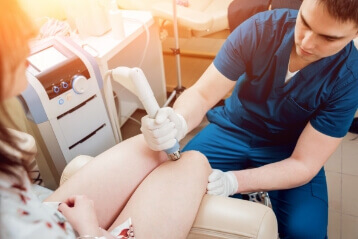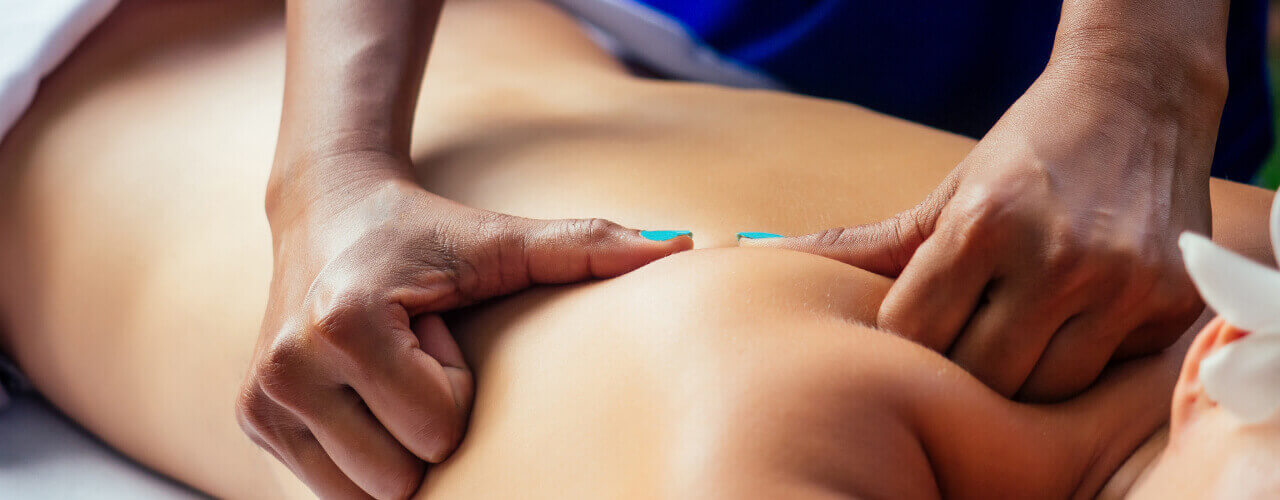Pain Relief for Arthritis
Live Life Comfortably: Relieve Arthritic Pain With Physiotherapy
Do your joints feel achy or stiff when you wake up in the morning? Is the pain at its worst first thing in the morning and decreases as the day goes on? These are some common signs of early-onset arthritis, a common ailment that many people experience. Unfortunately, many people live with their painful arthritic joints for far too long, before making the decision to seek help.
Fortunately, our Burlington physiotherapy practice can help manage your arthritis. One of our licensed physiotherapists will help decrease your risk of sustaining arthritis-related injuries, and their evaluation will also help in determining which treatments will be beneficial in providing pain relief. If you have been diagnosed with arthritis, or you think you may be experiencing arthritic symptoms, contact Elite Physiotherapy Clinic, Progressive Sports Medicine, or Total Health Link today. We’ll schedule an appointment for you and get you started on your first steps toward relief.
Why do I have arthritis?
Osteoarthritis is fairly easy to diagnose because it is the most commonly experienced type of arthritis. There are a few ways that osteoarthritis can develop. Sudden injuries to the affected joint can cause osteoarthritis, or it can develop after a previous injury has fully healed. For example, let’s say you took a harsh fall on your knees in the basketball court when you were younger. You received the necessary treatment, recovered, and continued playing basketball. Even if your injury healed completely, it is still possible for osteoarthritis to occur later in life, especially if you continued running and jumping on the affected joint.
Labor-intensive careers can also cause osteoarthritis to develop. If you have a job where you have to swing tools in repetitive motions (such as a carpenter or roofer), your joints are at a higher risk for developing osteoarthritis. An additional factor that increases the risk of osteoarthritis is obesity, since additional strain is being put on the hip and knee joints.
Rheumatoid arthritis is a little more difficult to understand. It is the second most commonly experienced form of arthritis, and it develops as an autoimmune response. When someone is diagnosed with rheumatoid arthritis, it means that their immune system sees the joints as a threat and decides to attack them. This causes pain and inflammation in the joints. While research is still being done in order to better understand rheumatoid arthritis, many experts believe that your medical history, environment, and hormones could all be contributing factors. Since rheumatoid arthritis is an autoimmune condition, rather than an injury or general “wear and tear” like osteoarthritis, it is common for the same joints to be affected on both sides of your body.
What are the most common symptoms of arthritis?
The Arthritis Foundation states that arthritis affects over 50 million people. It is also the leading cause of disability across the nation. Due to its commonplace nature across America, it is important to understand the symptoms so you can better identify if you may have the condition.
Osteoarthritis is caused when the joints begin to wear down. This can develop as a result of old age or overuse of the joints. The “wear and tear” of osteoarthritis can cause severe pain in the joints, as the cartilage is no longer acting as a cushion and shock absorber. Without thick cartilage to act as a cushion, the bones begin to rub together. This can cause piercing pain, tightness, or soreness within the joints.
Rheumatoid arthritis, also known as “inflammatory arthritis,” has been known to cause painful swelling, bone erosion, and joint deformity. Its symptoms typically present themselves in the forms of stiffness, weakness, tenderness, or a “pins and needles” sensation. This condition is also typically more common in females than males.
Those suffering from any type of arthritis tend to have similar symptoms. A common report amongst arthritic patients is a feeling of stiffness within the joints as soon as they wake up, with the discomfort fading throughout the day. Arthritis can also limit your daily life, as pain may be experienced during exercise or work, fading once the activity is over. You may also notice “popping” or “clicking” sounds when moving your joints, and they may feel sensitive or painful to the touch.
Find pain relief for arthritis with us:
WebMD states that those suffering from arthritis aches and pains can greatly benefit from physiotherapy. After scheduling an appointment with Elite Physiotherapy Clinic, Progressive Sports Performance, or Total Health Link, one of our highly-trained Burlington physiotherapists will conduct a physical evaluation to determine your best course of treatment. Treatment plans will be determined based on the nature of your condition. They typically include weight management to help ease some stress on your joints, and/or posture improvement to relieve stiffness and prevent injury. Our physiotherapist will also provide specific techniques for alleviating your arthritis pain, which may include ultrasound, manual therapy, or thermal therapies.
Arthritis treatments are aimed at alleviating pain and decreasing the amount of stiffness, stress, and inflammation surrounding your joints. If you have arthritis, or you think you may be experiencing arthritic symptoms, Contact Us Today at Burlington, ON Center to consult with one of our physiotherapists. At Elite Physiotherapy Clinic, Progressive Sports Medicine, and Total Health Link, we are dedicated to helping you get the treatment you need so you can live life comfortably.
FAQs
What are the symptoms for arthritis pain?
Do your joints feel stiff, achy, or painful, especially when you wake up in the morning? If so, you may be experiencing the effects of arthritis. This is one of the most common symptoms of arthritis, but it is common to also expereince accompanying symptoms. Other sensations you may experience with arthritis include pain in the affected region, which may spread to surrounding body parts; persistent stiffness; inflammation; muscle spasms, joint creaking, clicking, or popping sounds; increased pain with certain activities, such as work or exercise; decreased range of motion in the affected area, abnormalities in gait, such as limping; swelling; weakness; and a warm sensation in the affected joint.
What are the best physiotherapy treatments for arthritis pain?
Regardless of the cause of arthritis, physical therapy plays a major role in the treatment of its symptoms. Your physical therapist will conduct a physical evaluation to analyze your joint movement, muscle strength, and overall function, in order to pinpoint the exact areas that are causing you pain. You will then be prescribed a personalized treatment plan, focused around your specific needs. Treatment plans will include targeted stretches and exercises aimed at relieving your pain and improving your function, in addition to any specialized methods your physical therapist deems fit. This may include manual therapy, ice and heat therapies, electrical stimulation, or ultrasound. Your physical therapist may also include additional services as needed, such as weight management techniques to help ease some stress on your joints, and/or posture improvement to relieve stiffness and prevent injury.
Can arthritis affect different body parts?
There are over 100 different types of arthritis, containing monoarthritis (where only one joint is affected) and oligoarthritis (where multiple joints are affected). According to the Centers for Disease Control, roughly 54.4 million U.S. adults are diagnosed with some form of arthritis per year. As we age, the cartilage in our joints wears down, causing painful bone-on-bone rubbing, inflammation, stiffness, and pain. While it is possible for arthritis to develop in any of the joints, the fingers, elbows, shoulders, lower back, hips, and knees are among the most common.
Can arthritis be cured?
While there is no cure for arthritis yet, it is possible to alleviate arthritic symptoms by improving your joint movement, muscle strength, balance, and coordination through physical therapy treatments. In some cases, physical therapy can even make it possible to eliminate symptoms entirely. For best results, it is in your best interest to consult with a physical therapist as soon as you begin noticing arthritic symptoms. The sooner they get treated, the easier they are to manage. Whatever type of arthritis you may be suffering from, physical therapy undoubtedly plays an important role in pain relief. In addition, it can also help you avoid the need for harmful pain-management drugs or invasive surgical correction.




